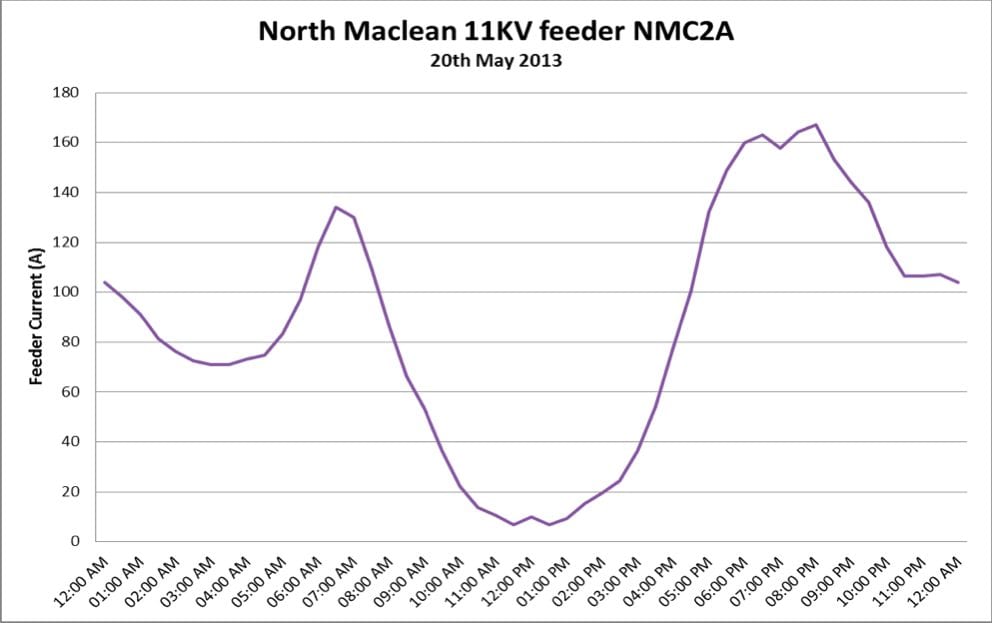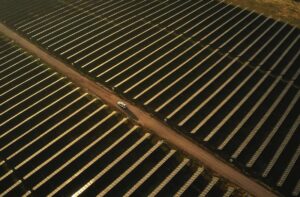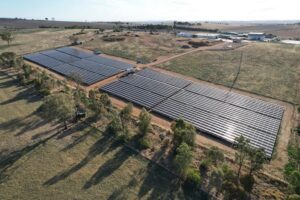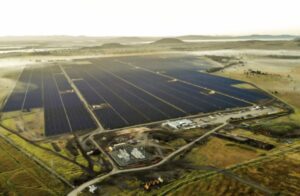We’ve been hearing a lot about the solar revolution recently: from the largest generators and utilities in the US, the entire German power industry, from the world’s biggest solar companies, and from leading energy analysts from the likes of Macquarie Group, UBS, Deutsche Bank, and Citigroup who track the implications for listed electricity and energy technology assets around the world.
The basic synopsis is that the arrival of rooftop solar as a cheaper alternative to grid based power – as is now the case in more than 100 countries, including Australia – is changing the nature of the energy game forever.
Last week, at the Solar 2013 conference in Melbourne, we got a rare insight into how this is happening in Australia – from the point of view of one of the major network operators. We’ve had plenty of graphs to suggest the changing consumption patterns and on the impact on pricing, but how exactly is it affecting the day-to-day operations of the people charged with delivering that service?
The Queensland utility Energex is interesting because no network operator has had to deal with quite as much of a rush on solar as this network – centred around the state capital Brisbane and the high growth areas of south-east Queensland, including the Gold Coast, the Sunshine Coast and their hinterlands.
Energex already has installed 212,000 systems and is still adding them at 3,000 a month. Even in the first three months 41MW have been added – and it was continuing despite the fall in incentives. Talk of time of use pricing and further increases in electricity prices – and the continuing fall in the cost of solar – was the cause of that.
Mike Swanston, who goes under the title of “consumer advocate” for Energex, began his presentation by delivering a few home truths to the solar industry. The first was that the industry was kidding itself if it thought the network operators were not going to try to recover their regulated return on investment – even if solar was subtracting demand from the grid in a significant way. (This is an issue we raised on Thursday with our suggestion that perhaps the only solution is for the value of networks to be written down, particularly in light of some established over-spending, but more on that below.)
Swanston also sought to dispel a few of the myths that have been circulated in the media. One was that solar had not been having an impact on coal-fired generation. He noted that some 700MW of coal-fired generation had been sidelined in Queensland, a comparable amount to the amount of solar capacity in the state. “You don’t need to be Einstein to work out where that energy has come from,” he said.
He also noted there was no evidence that solar households on juicy export tariffs (now ended) had shifted their use of grid power to the evening peaks. Nor for that matter, was there any significant growth in peak demand, particularly in residential areas. “Peak demand is not an issue in the next five to six years,” he said. “The network is in pretty good condition.
But he gave some fascinating insight into just what impact high penetrations of solar are doing to the shape of the load curve – and on the habits of household energy users.
Consider this load curve (in the graph below) from one of the network’s key feeders. There was a time when night-time electricity demand was so low that governments had to come up with proposals such as off-peak hot water to provide the generators some demand. Now, the night-time use on certain parts of the grid is virtually more than the daytime. Partly this is due to the enormous number of appliances that are on stand-by or charging during the night – plasma TVs, laptops, mobiles, and games.
Swanston said electricity from rooftop solar kicks in after the morning peak – to such an extent that on sunny days some feeders run backwards. Then, hey presto, the sun goes down, householders return, turn on the plasma TV and the air-con, and the load rises from 3 per cent to 100 per cent in the matter of a few hours. Swanston said there was no doubt that this was a network challenge. But it was not insurmountable. “We will fix it and we will deal with it.”
To give an illustration of what has happened over the past four years, here is a graph (below) plotting the load on the same day (2nd Tuesday in October) as solar is being added to the grid.
As Swanston summarised it – midnight hasn’t moved, the morning peak is down slightly, the midday peak is “going down the gurgler” and the evening peak hasn’t moved an inch. “That presents technical issues,” he noted. “It presents much larger commercial issues.”
And here are two more graphs (below) to add to the overall picture. Not only is the intraday load being reshaped, overall demand is decreasing from the domestic sector – mostly because households have added vast amounts of rooftop solar, but also because they have become more judicious about the way they use energy. The first graph below illustrates the seasonal changes – there was once a peak in winter and then in summer. Despite the huge additions of air-con, that summer peak has faded dramatically.
The second graph below indicates the decline in the annualised use of energy drawn from the grid. Solar households have achieved substantial falls, but even non-solar households have reduced demand as the result of various energy efficiency measures, and as a response to rising electricity prices.
So what does this mean for networks? The essential problem from the network point of veiw is that they need to recoup their investment – which has been approved by regulators. Networks across the country had been investing huge amounts in the last few years – a total of $40 billion. Energex itself had spent around $600 million a year in the last four years, but this would drop off sharply.
But Swanston said the “vast majority” of urban networks are “solid as a rock.” “The introduction of solar from a technical point of view is not a problem,” he said. That should not be a surprise, because it echoes a CSIRO study last year that suggested that networks should be able to absorb up to 40 per cent with little problem. If there was an issue, it was not likely to be the fault of solar.
As mentioned above, the issue are not so much technical issues as commercial ones. Swanston vigorously defended the right of the network operators to recoup their investment, but he made clear that over the long-term it would require a change to the way that customers were billed – continuing on the kilowatt-hour basis would accelerate the “death spiral,” while raising fixed charges was also an unlikely long-term solution. (Others have pointed out that it would likely cause a backlash from consumers, and reduce incentives for energy efficiency).
Just how those new charges will evolve is yet to be seen. Swanston said Energex was spending around $20 million installing new metres to solar households, and in regional areas, the influx of solar was having more of an impact because the “thinner” and “weaker” networks were less able to cope.
He said it was clear that more households would turn to solar, and new financing options would also attract owners of rental properties. This would continue to reduce demand from the grid. “This is a huge problem for us,” he said.
Swanston said battery storage would play a key role. The eventual solution would have to incorporate demand management – be that in storage (such as batteries), or in traffic control.
He suggested that there would need to be a revolution in the way that electricity and grid access was charged. Battery storage would be important because it could flatten the remaining peaks. Home storage, where people had options and “could make their own decisions”, was the likely future. How that pans out for tariffs and networks was not yet clear. At the moment, the opportunity for battery storage was a straight arbitrage. “How cheap can I charge it, and how expensive can I spend it.”
He didn’t see much interest in networks using battery storage on a “utility scale”, although he said networks in rural areas , where the “thin networks” were much more susceptible to increased penetration of solar, and faced higher costs, may find it cost-effective to invest in larger storage facilities rather than having to upgrade those network lines.












